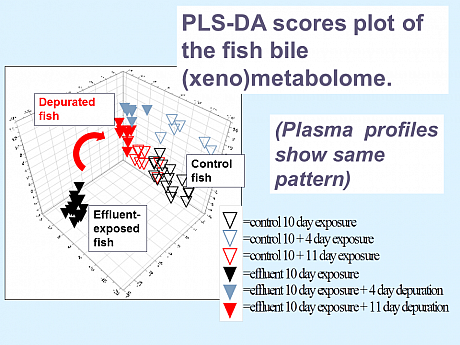What is metabolomics?
Genomic approaches, which include transcriptomics, proteomics,and metabolomics (metabolite profiling), are increasingly being used in (eco)toxicological investigations to investigate mechanisms of action of toxic contaminants.Metabolomics comprises the profiling of the suite of biochemicals present in an organism at any one time. It is a high-throughput semiquantitative approach to obtaining information on the downstream final products of the genome, referred to as the “metabolome”.
What is xenometabolomics?
A similar holistic profiling approach can also be used to profile the range of chemical xenobiotics and their metabolites in an organism exposed to environmental contaminants, i.e. the “xenometabolome”. Together both analysis of the xenometabolome and metabolome of an organism exposed to contamination aloows us to explore both the exposure and effect of mixtures of environmental contaminants in wildlife and humans.
Chemical profiling techniques.
We use high resolution mass spectrometry techniques to profile trace levels of contaminants and metabolites. We collaborate with Dr Ali Abdul Sada in the Chemistry department to develop new methods using state- of -the-art MS such as UPLC-nanospray TOFMS to enhance analytical sensitivity.
Effluent exposure and xenometabolome of fish.
Treated wastewaters (primarily domestic) effluents consist of many 1000s of chemicals, but not all are bioavailable.Effect studies often investigate the action of one or two chemicals at a time, but fish are exposed to complex mixtures of contaminants. Our group investigates the chemical mixtures that fish are exposed to and their effects.
Some of the predominant contaminants accumulating in the bile were surfactants, chlorinated disinfectant agents, pharmaceuticals, sunscreen agents. Although the fish were able to rapidly excrete many of the contaminants, our studies showed that short term exposure to this complex mixture resulted in liver toxicity, and changes in lipid and bile acid metabolism. See Al Sahli et al.

Figure showing multivariate analysis of bile from trout exposed to clean water or wastewater effluent. Contaminants in bile were rapidly depleted after fish were transferred to clean water, but exposure still disrupted the fish metabolome resulting in potential health effects.


